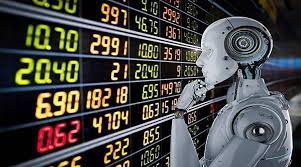In the fast-paced world of foreign exchange (forex) trading, the demand for automation and efficiency has led to the rise of forex robots. These automated trading systems, also known as expert advisors (EAs), promise to revolutionize trading by executing trades on behalf of traders, often without human intervention. But are forex robots really as forex robot and reliable as they claim to be? Let’s delve into the pros and cons of utilizing these automated tools in the forex market.
Pros:
- 24/7 Trading: One of the primary advantages of forex robots is their ability to trade round the clock. Unlike human traders who need rest, these automated systems can monitor the market and execute trades at any time, taking advantage of opportunities that arise even during odd hours or while the trader is away.
- Elimination of Emotional Bias: Human emotions such as fear, greed, and hesitation can significantly impact trading decisions. Forex robots, on the other hand, operate based on predefined parameters and algorithms, thereby eliminating the influence of emotions from the trading process. This can lead to more disciplined and consistent trading strategies.
- Backtesting and Optimization: Forex robots allow traders to backtest their strategies using historical data, enabling them to assess the performance of their system under various market conditions. Additionally, these systems can be optimized to enhance performance based on past data, potentially improving their effectiveness in live trading.
- Speed and Efficiency: Forex robots can analyze multiple currency pairs simultaneously and execute trades within milliseconds, far faster than human traders. This speed and efficiency can be crucial in capturing fleeting opportunities in the market, especially during periods of high volatility.
Cons:
- Over-Optimization: While optimization can improve the performance of a forex robot, there is a risk of overfitting the system to historical data. Over-optimized robots may perform exceptionally well in backtests but fail to deliver similar results in live trading due to changes in market conditions.
- Lack of Adaptability: Forex robots rely on predefined algorithms and parameters, which may not be able to adapt to sudden shifts or anomalies in the market. As a result, these systems may struggle to perform effectively during periods of extreme volatility or unexpected news events.
- Dependency on Market Conditions: The performance of forex robots is heavily dependent on the prevailing market conditions. Strategies that work well in certain market environments may falter during periods of low volatility or erratic price movements, leading to losses for traders.
- Risk of System Failures: Forex robots are not immune to technical glitches or failures, which can result in missed opportunities or erroneous trades. Traders need to regularly monitor and maintain their automated systems to ensure they are functioning correctly.
In conclusion, while forex robots offer several potential benefits such as 24/7 trading, emotion-free decision-making, and efficiency, they also come with inherent risks and limitations. Traders should carefully evaluate the suitability of these automated systems based on their trading objectives, risk tolerance, and market conditions. Ultimately, success in forex trading requires a combination of technical expertise, strategic thinking, and prudent risk management, whether executed manually or through automated means.



